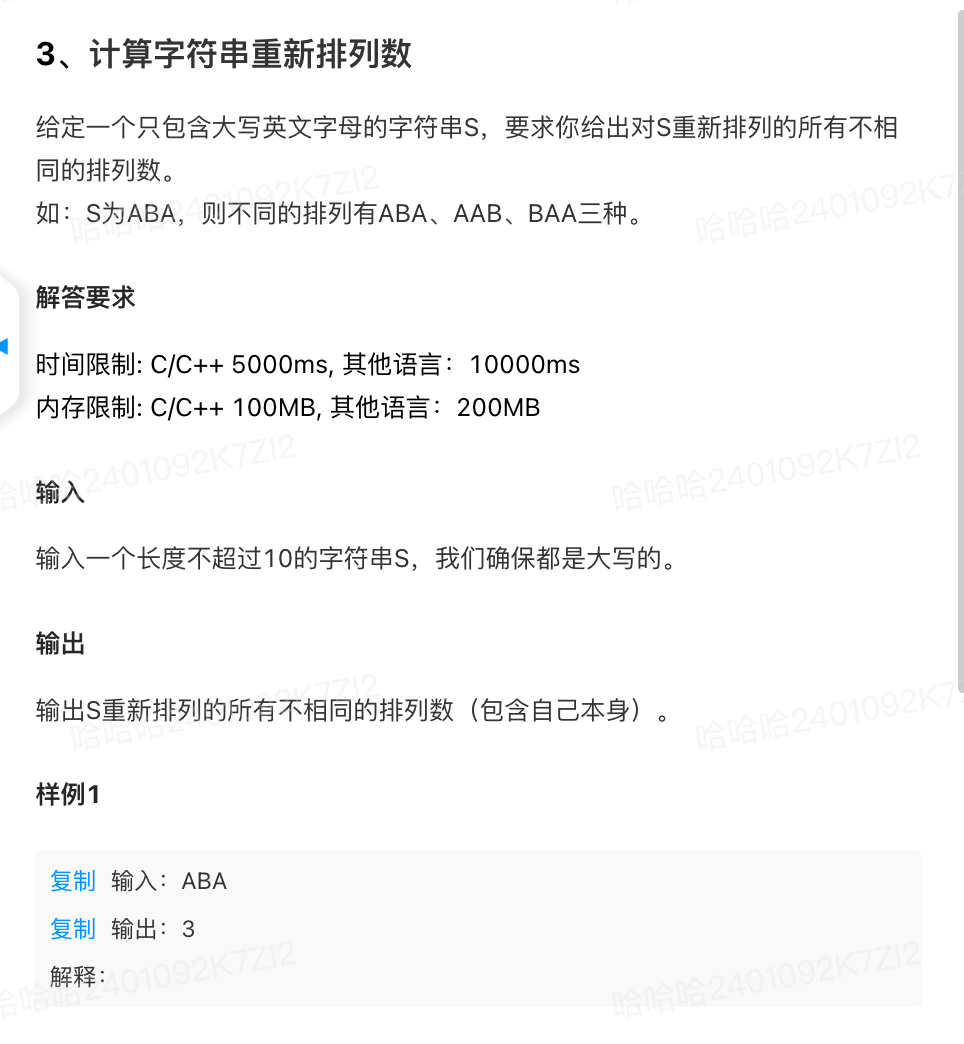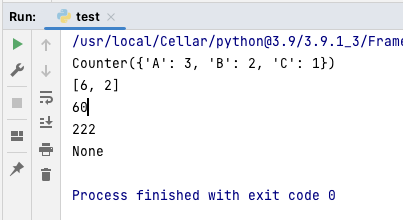分类:排列组合
知识点:
-
计算字符串中每个字符出现的次数 Counter(string)
-
计算列表中每个元素出现的次数 Counter(list)
-
阶乘 math.factorial(num)
-
排列去重
题目来自【华为招聘模拟考试】

先把每个字符当成唯一出现过一次,计算所有排列数;
再统计重复出现的字母,除去每个字母的排列次数。
例如:



import math
from collections import Counter
# If you need to import additional packages or classes, please import here.def func():# please define the python3 input here. For example: a,b = map(int, input().strip().split())S = input().strip()# please finish the function body here.# please define the python3 output here. For example: print().# Step1: 先把每个字符当成唯一出现过一次,计算所有排列数up = math.factorial(len(S))# Step2: 再统计重复出现的字母的排列数down_list = []# print(Counter(S))# 统计每个字符的数量 Counter({'A': 2, 'B': 1})for letter, n in Counter(S).items():if n > 1:# 计算每个字符出现的排列次数down_list.append(math.factorial(n))# print(down_list)# [6, 2]down = 1for i in down_list:down *= i# 除去每个字母的排列次数# // 取整除 - 往小的方向取整数print(up // down)if __name__ == "__main__":func()

参考:
https://blog.csdn.net/weixin_44052055/article/details/124076922
https://blog.csdn.net/qq_43486538/article/details/132911707
Counter用法
from collections import Counter# 示例字符串
example_string = "abracadabra"# 使用 Counter 计算字符串中每个字符的出现次数
char_counts = Counter(example_string)# 打印结果
print(char_counts)from collections import Counter# 示例列表
example_list = [1, 2, 3, 1, 2, 4, 1, 3, 5]# 使用 Counter 计算列表中每个元素的出现次数
element_counts = Counter(example_list)# 打印结果
print(element_counts)by 软件工程小施同学
)




)




)





)


